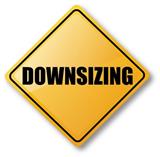 An owner is learning a lot about his company the hard way now that he terminated a high priced and overly demanding worker. Specifically, that means he’s doing the work himself and seeing more cash as a result. Also, there is a side benefit in that everyone is more of a “team” and he has a renewed spirit and vision that has been missing for years. All he has to do now is beware of the Downsizing Trap.
An owner is learning a lot about his company the hard way now that he terminated a high priced and overly demanding worker. Specifically, that means he’s doing the work himself and seeing more cash as a result. Also, there is a side benefit in that everyone is more of a “team” and he has a renewed spirit and vision that has been missing for years. All he has to do now is beware of the Downsizing Trap.
What’s the trap? It is playing defense to the exclusion of offense. In any game, you still have to put points on the board to win, even when you are behind.
In our friend’s case, he was the selling owner and, as with many businesses, sales were down. Then the worker went too far one last time and he was “made available to the industry.” Then the owner re-engaged and learned what was needed in prepress. Work isn’t getting out as fast as it use to; but not as much need now get out to make the same money.
Unfortunately, many owners engage in spiritual management to the exclusion of the real issues of getting jobs out, getting jobs in, and getting paid. Worse yet, when faced with a similar downturn, many fail to re-engage and standby as their companies fail. So, this owner deserves a special commendation for, in battleground terms, a good retreat is always better than a bad stand.
Now he must understand the purpose behind a good retreat. A retreat is not surrender, rather it is time to regroup and attack anew. In this case, the owner downsized and stepped in to fill a needed function. He found cash relief because he wasn’t paying the overpriced prima donna. So, the Downsizing Trap is that he will become comfortable and stay there.
The owner must realize that this better life lasts only a short while because he’s not on the battlefield doing his job of engaging customers. Without new customers, business will erode.
The purpose of business, according to Al Ries (marketing guru and author of many marketing books) is to: attract and retain customers. And in this business, we know that in most small businesses the top 25 accounts provide typically 50-75% of total sales. So, when something happens to one or more of them and we are bunkered down in work we lose the capacity to replace them. So we rely on what worked in the past: we downsize again and take on more work ourselves.
In short, we downsize ourselves to death. We have seen it time and time again. We talk to a company doing $1.8 million with 22 people, but they’re not making money. A year later we talk to them again and they are producing $1.3 million with 16 people and still not making money. Then they’re at $850,000 with 10, and so on until they die.
Our owner needs to work himself back up the ladder by working his way into his next job until he’s able to reengage selling efforts at least part time. Specifically, he either cross-trains someone who can learn what he has learned or bring someone in from the outside so he may again step up to the responsibility of engaging customers.
Point: You downsize to regroup and attack, not to hide and hibernate. Too much hibernation and you die of starvation.










